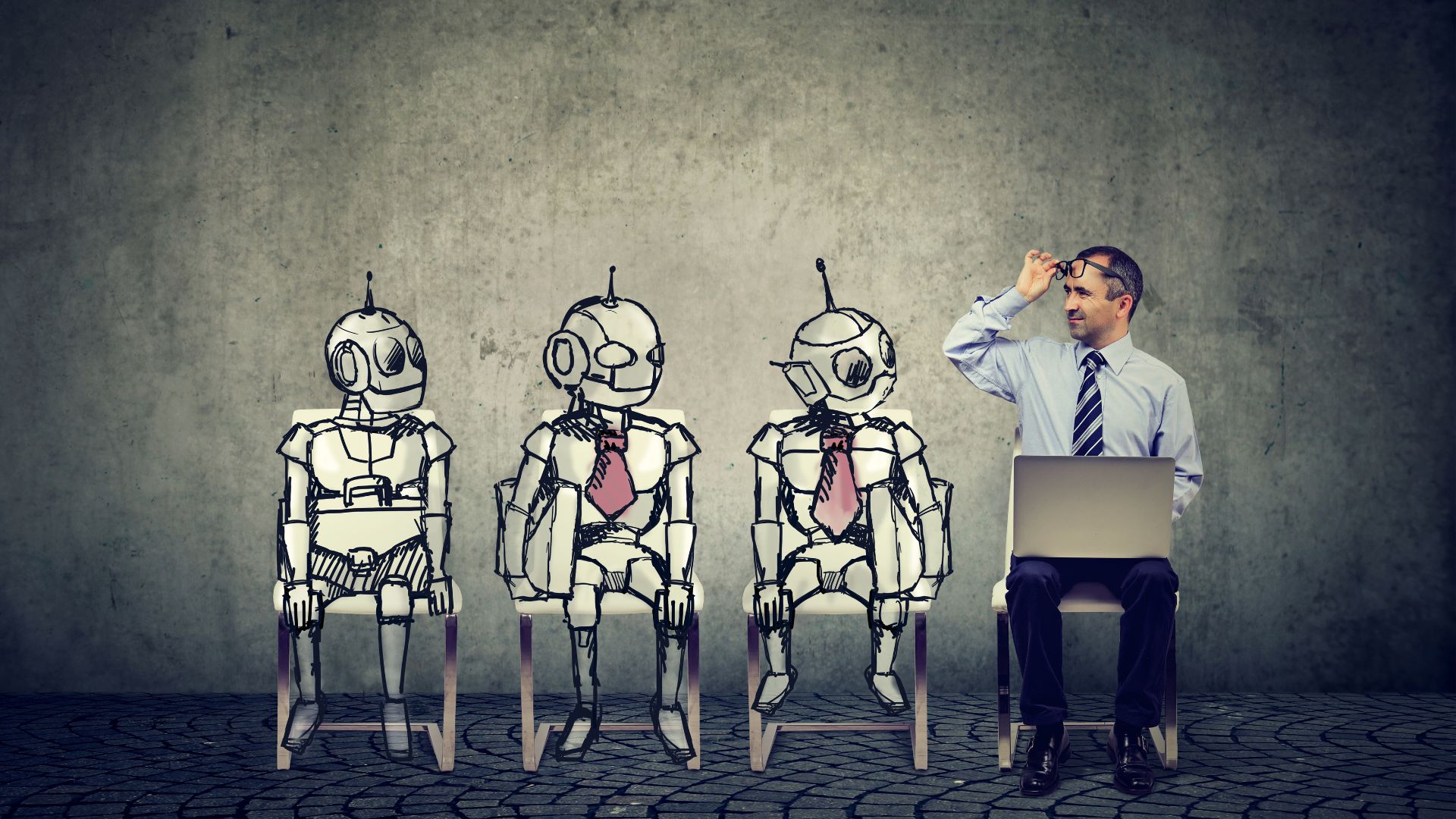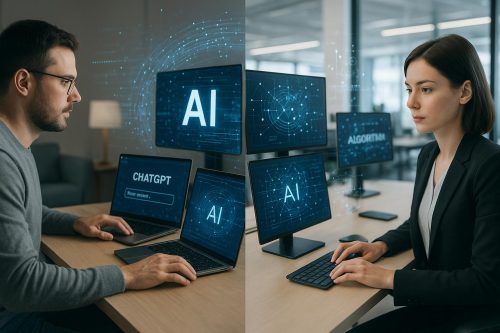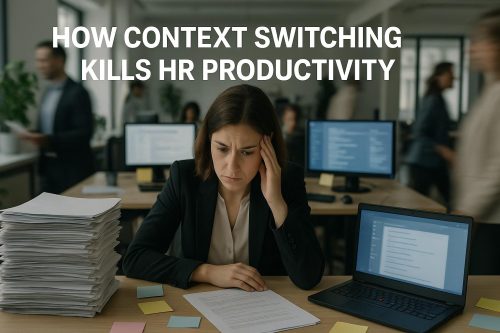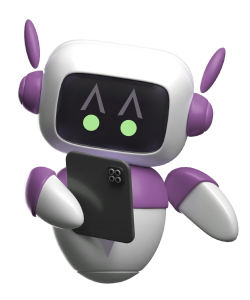AI is transforming HR operations, saving businesses time and money. Companies using AI in HR report:
- 30% higher productivity
- 15–20% lower operational costs
- $1,000 saved per employee annually
Key Benefits of AI in HR:
- Faster Hiring: AI reduces recruitment time by up to 75%.
- Cost Savings: Operational costs drop by up to 20%.
- Improved Retention: AI helps lower employee turnover by creating tailored plans.
- Efficiency: AI automates repetitive tasks, cutting administrative workload by 50%.
- Better Decisions: AI improves diversity and aligns employee goals with business objectives.
Quick Comparison
| Metric | Manual HR Processes | AI-Powered HR Solutions | Improvement |
|---|---|---|---|
| Time-to-Hire | 42 days | 60–75% faster | Faster hiring |
| Recruitment Costs | Higher | 30% lower | Cost reduction |
| Administrative Time | High manual workload | 50% less time spent | Reduced workload |
| Productivity | Standard | 30% increase | Higher efficiency |
| Turnover Rates | Higher | Lower with tailored plans | Better retention |
AI reshapes HR by automating tasks, improving efficiency, and reducing costs, making it a valuable investment for modern businesses.
Raise the bar with AI + Automation in HR
Direct Cost Comparison
The costs of AI and manual HR processes differ greatly, both in the short and long term. Data shows that AI can lead to notable savings over time.
Budget Impact
For small-to-medium businesses, upfront AI expenses can reach around $1.3 million, often representing 10–20% of their total budgets [1]. While the initial investment is high, the long-term savings make it worthwhile. This financial commitment lays the groundwork for quicker, more efficient operations.
Speed and Availability
AI dramatically cuts down processing times compared to manual methods. Deloitte highlights that “69% of HR leaders consider AI a key driver of efficiency, leading to an estimated 50% reduction in the time spent on administrative tasks” [1]. For example, AI solutions can reduce resume screening times by 75% [5] and speed up the overall hiring process by 67% [5]. These improvements significantly enhance operational efficiency.
Staff Utilization
AI doesn’t just save money – it also allows HR teams to focus on more strategic tasks. McKinsey notes that companies using AI in HR functions have experienced up to a 30% boost in productivity [1].
Manual processes often come with hidden costs that are easy to overlook. Seventy percent of businesses report that unexpected expenses, like staff training and platform integration, can end up being two to three times higher than the initial software costs [4]. On the other hand, companies adopting AI can recover up to 125% of their investment within three years [1].
Real Examples: AI vs Manual HR Tasks
Hiring Process Comparison
AI brings speed and efficiency to hiring. For example, Unilever’s AI platform assessed 20,000 candidates, reducing hiring time by 75% while improving diversity [1]. Compare that to traditional hiring, which takes an average of 42 days and costs $4,129 per new employee [6].
Manual resume screening is a major pain point for 52% of recruiters [6]. AI tools, however, can analyze hundreds of resumes in seconds, saving recruiters hours of effort [1].
This efficiency carries over into onboarding tasks for new hires.
New Hire Setup
AI doesn’t just stop at hiring – it’s changing how companies onboard employees. Consider these real-world results:
| Company | Results Achieved with AI | Source |
|---|---|---|
| IBM | 30% faster productivity, 25% higher retention | [8] |
| Unilever | 30% quicker onboarding, employees 50% more prepared | [8] |
| KP Snacks | 25% cut in training time | [8] |
| Accenture | 40% rise in onboarding satisfaction | [8] |
Here’s why this matters: 20% of employee turnover happens within the first 45 days [8]. AI chatbots help by offering 24/7 support, answering FAQs, and guiding new hires through processes, which lightens the load on HR teams [7].
Regulatory Requirements
AI also plays a key role in compliance. It helps companies meet regulatory standards more accurately than manual methods. For instance, IBM’s HR analytics tool identifies employees likely to leave and creates tailored career plans, leading to a 10% drop in attrition rates [1]. This accuracy not only avoids costly mistakes but also underscores how AI can help cut expenses across HR operations.
sbb-itb-eb32bf3
Future Benefits of HR AI Integration
Growth Management
AI in HR systems helps handle growing workloads without the need to expand HR teams. By automating repetitive tasks, these systems free up HR professionals to concentrate on more strategic projects.
Here’s how AI improves performance across key areas:
| Area | Performance Boost | Cost Savings |
|---|---|---|
| Productivity | 30% increase | $1,000 saved per employee annually |
| Administrative Tasks | 50% less time spent | Reduced overtime costs |
| Employee Retention | 31% improvement | Lower hiring expenses |
As operations scale, reducing errors becomes just as important as improving efficiency.
Error Prevention
AI minimizes errors in HR processes and improves compliance accuracy. Advanced analytics enhance risk management and data reliability. Companies using AI for fraud detection and risk assessment have cut related costs by 50% [1].
Beyond error reduction, AI also helps improve the employee experience.
Staff Satisfaction
AI integration has a noticeable impact on employee satisfaction, with 53% of organizations reporting improvements [1].
“While AI can alleviate mundane tasks, it is crucial to identify areas where its presence can create space for new human work and the demand for new human skills.” – Ravin Jsethasan, Global Leader for Transformation Services at Mercer [9]
AI-powered tools, such as conversational assistants, improve new hire productivity by 30% [9]. These tools offer faster responses to employee queries, deliver consistent and accurate information, provide tailored learning opportunities, and ensure 24/7 HR support. Additionally, AI-driven evaluation tools have improved performance assessments, with companies reporting a 50% better alignment with organizational goals [1]. This results in fairer evaluations and greater trust in HR processes.
Side-by-Side Process Comparison
Performance Metrics
A closer look at the numbers reveals how AI-powered HR systems outperform manual processes. Here’s a breakdown of the key improvements:
| Metric | Manual HR Processes | AI-Powered HR Solutions | Improvement |
|---|---|---|---|
| Time-to-Hire | Long recruitment cycles | Up to 60–75% faster (e.g., Unilever’s results) | 60–75% faster |
| Administrative Tasks | High manual workload | Around 50% less time spent | 50% reduction |
| Recruitment Cost | Higher traditional costs | Lower costs through automation | 30% lower costs |
These figures highlight the measurable impact of AI on HR efficiency and cost-effectiveness.
Real-world examples back up these numbers. For instance, Unilever’s AI-driven hiring system screened 20,000 candidates, cutting hiring time by 75% and boosting workforce diversity by 16% [2]. Similarly, Fortune 500 companies report a 30% drop in recruitment expenses, 50% faster hiring cycles, and a 22% reduction in operational costs within the first year of implementation. Automated HR systems have also reduced payroll and benefits errors by half, leading to direct cost savings and better compliance [2].
“Organizations that implemented HR automation saw a 29% decrease in time spent on administrative tasks, allowing HR professionals to focus more on strategic initiatives.” – Deloitte [2]
On average, companies save $5,000 per employee annually thanks to increased efficiency and fewer errors. Additionally, businesses using AI for performance reviews report a 50% improvement in aligning employee goals with organizational objectives [1].
These metrics demonstrate how AI isn’t just speeding up HR processes – it’s delivering real financial and operational value.
Conclusion
Key Takeaways
AI-driven HR tools offer clear cost savings compared to manual methods, leading to increased productivity and less administrative burden [1]. Top-performing companies highlight the return on investment through:
- Time Savings: AI significantly shortens recruitment timelines.
- Improved Performance: AI enhances goal-setting and drives productivity.
- Better Retention: AI insights help reduce employee turnover.
Achieving these benefits requires a planned, step-by-step approach.
Implementation Steps
To make the most of AI in HR, follow these steps:
- Evaluate and Plan
Review your current HR processes to pinpoint repetitive, high-volume tasks that are ideal for automation. - Set Priorities
Focus on key HR areas [3], such as:- Recruitment and candidate screening
- Onboarding new employees
- Managing benefits
- Ensuring compliance
- Choose the Right Tools
Look for AI solutions that integrate smoothly with your current systems. Ensure they are scalable, protect data privacy, and are simple for your team to use.
Switching to AI-powered HR systems is an investment that can deliver measurable improvements in efficiency, cost management, and employee satisfaction. Companies that adopt these tools not only streamline operations but also create a stronger foundation for growth while keeping the human touch central to HR practices.





